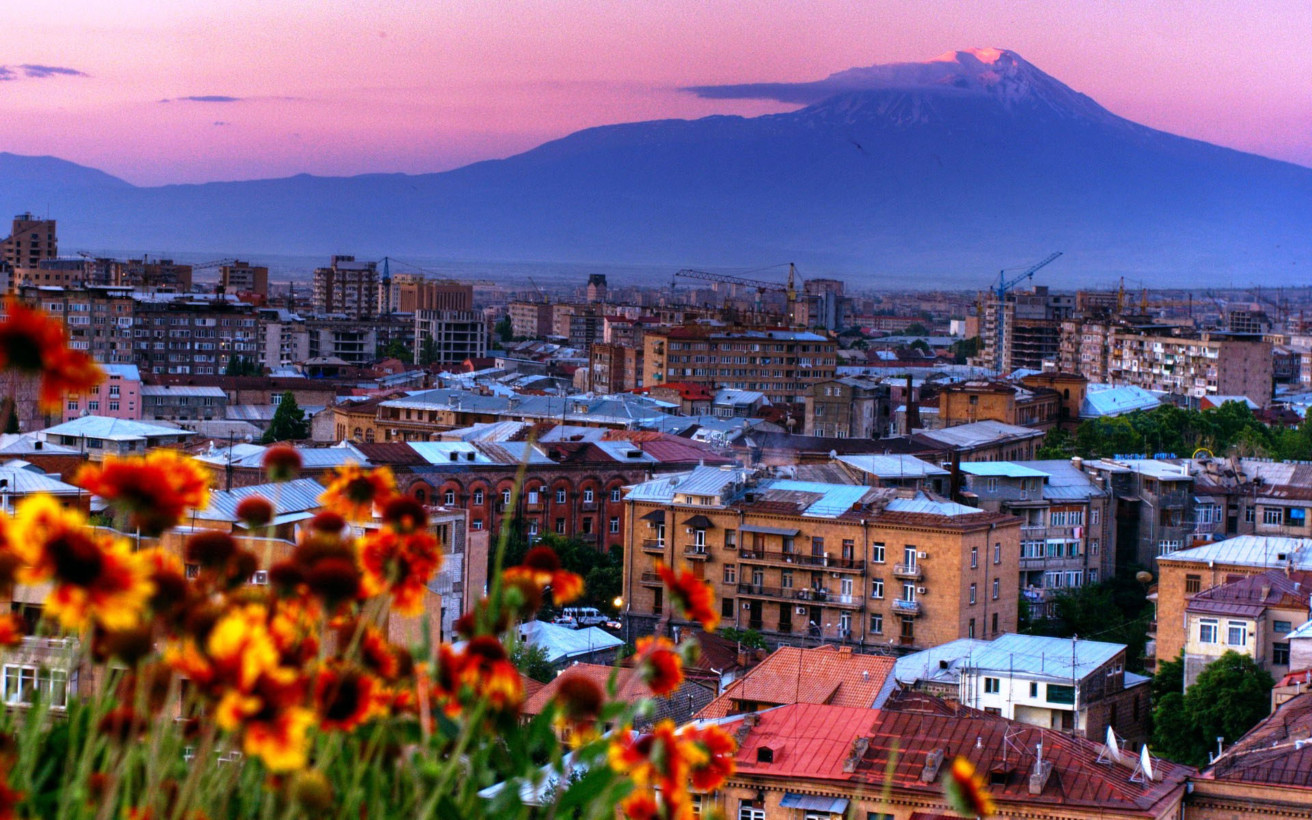
Armenia was once the center of IT innovation for the USSR. A turbulent history has stifled the economy, but things are starting to look up for the Caucasus republic. A highly-skilled, post-soviet engineering workforce and a diaspora of advocates, combined with new government initiatives, are igniting renewed growth in Armenia’s IT sector. These businesses are creating new technologies — from award-winning mobile apps to world-first presentation tools — recognized across the globe and many startups are making their way to the US.
The Armenian tech industry is growing at an annual rate of 20 percent, greatly exceeding the country’s two percent economic growth. Annual tech revenues from some 400 IT companies make up $475 million and by 2018, it is estimated this industry will be the dominant sector driving new wealth for the economy.
Emerging startups, global expansion and initiatives from some of the biggest names in tech – from Intel to Microsoft — are creating great momentum. Armenia’s tech scene is at a real turning point. The Silicon Valley of the former Soviet Union has morphed into a thriving tech startup hub, attracting global recognition.
So, how is the Armenian tech scene growing? What is the country doing to drive international investment and which startups are making the biggest waves in the global tech scene?
Reigniting IT innovation
In the days of the Soviet Union, Armenia designed and manufactured 40 percent of the mainframe computers for the military. The Yerevan Computer Research Institute, a secret building in the capital city, employed 5,000 highly skilled workers, but later fell to ruin. This is just a small portion of the “several hundred thousand specialists” that worked behind the scenes at the heart of IT innovation, according to the Union of Information Technology Enterprises in Yerevan.

Online gaming and sports betting software company BetConstruct, an investor in my company UCRAFT, launched in Yerevan in 2003 and today has offices worldwide.
BetConstruct’s founder and chairman Vigen Badalyan told me, “Back in 2009 we were buying software and services for our B2C needs from software providers to compete with our international competitors in our niche. Buying a software was a long lasting, slow and bureaucratic procedure. In 2011 we realized that everything that we had been developing in-house, with the help of our talented engineers, was much better compared to what we were buying from others. So we decided to showcase our software to the international market and received great feedback… And that was the beginning…”
Many of the largest IT companies operating in Armenia, such as Microsoft, Google and Oracle, are internationally headquartered with development teams based in the country. The government encourages expansion from these corporates with the implementation of its “open door” policy, designed to encourage foreign business owners and investment, with legal regimes that protect foreign capital.
In 2012, Intel announced the launch of a new research center during the ArmTech Congress. US Ambassador to Armenia John Heffern reported the potential for IT growth, “The creative mind is the key to the future of Armenia. The U.S. Department of Commerce has issued a report based on UNESCO data, according to which Armenia is the first among CIS member states with the number of inventions per capita,” he said.
The multinational joined global names such as Synopsys, D-Link and “virtualization giant” VMWare after its acquisition of IT startup Integrien – each running operations from the country and taking action to rouse a new generation of tech innovation.

These initiatives work to support Armenia’s youth through education and increasing work availability for skilled Armenians. But large corporations are not the only option, a burgeoning startup scene enabled by new government tax reduction schemes is changing the face of Yerevan and attracting global attention.
New legislation empowers entrepreneurs in Yerevan
Yerevan is one of the oldest cities in the world. However this ancient transit hub has renewed energy as the center of Armenia’s startup scene.
Recent legislation has made founding, operating and growing a tech startup in Armenia much simpler. After lobbying from the Union of Information Technology Enterprises (UITE), Armenian headquartered startups, tech centers, incubators and accelerations with fewer than 30 employees, now benefit from tax privileges.
Yerevan is also home to two free economic zones (FEZ) where businesses that meet certain startup requirements can operate without paying VAT, profit, property and income tax, also escaping export customs duty charges. One of these is found in the area of the RAO Mars Closed Joint-Stock Company and Yerevan Research Institute of Mathematical Machines, and is designed to enable, manufacture and export of new technologies.
Today, you really can launch a startup for a very low cost – and the effects of this are a growing startup ecosystem, and a culture of excitement. Armenian businesses are gaining traction and experiencing global recognition. Companies such as PicsArt, Triada Studios, Plexonic and BetConstruct are making waves in the tech industry, showing the enormous potential Armenia has as a center of innovation.

Yerevan-based Triada Studio is the creator of puzzle app Shadowmatic, the winner of the prestigious Apple Design Award and App Store Best of 2015. Triada Studios launched in 1993 as a computer graphics and animation studio. Cofounder and CEO Ara Aghamyan described the “huge intellectual potential” in Armenia.
Aghamyan claims the biggest challenge that the Armenian tech-scene faces today is the exodus of talent, as a large number of startups end up moving to the US to raise capital and reach greater audiences. “We can only overcome this by creating an ecosystem that will not only make people stay in the country, but also attract great minds from all over the world,” he told me.
The move to Silicon Valley
Nigel Sharp is the former technical project manager for Armenia’s TUMO Center for Creative Technologies and founder of Armenia-based startup Lionsharp creator of Voiceboard, “the world’s first gesture and voice controlled presentation solution.” Sharp told PSFK that a poor track record of foreign investment “plagued with corruption and losses” has created a barrier to foreign investment.
This distrust combined with the challenges of networking, common in any emerging startup hub, prevents many businesses from putting their creations in front of a global audience. This is made more difficult by limited access to entrepreneurial education, language differences and the need to travel. As a result, Armenian startups are moving to the US to gain support, funding and improve their growth prospects.
In April, photo-editing app PicsArt raised an additional $20M in VC, bringing its total funding to $45M and enabling the Armenia-born startup to grow its presence in China and Japan. In 2015, PicsArt’s CEO Hovhannes Avoyan relocated to join the company’s Chief Revenue Officer in San Francisco, helping to further solidify PicsArt’s recognition in the U.S. tech scene. PicsArt was later that year included on Forbes’s list of ”Hottest Startups of 2015”.

Influencers in the tech world are making efforts to strengthen ties between Armenia and the US. In March Triada Studios’ Ara Aghamyan wrote to President Obama explaining the tech community’s role in developing US-Armenian commerce. He drew attention to the issue of double taxation that deters foreign investment and restricts growth for businesses that are based in Armenia.
Shadowmatic is not the first to take a stand. PicsArt, Microsoft, FedEX, NASDAQ, Marriott, Grant Thorton and more have all gone on record in support of better economic relations to empower growth within the country.
US advocates of Armenian tech growth
Armenia’s enormous diaspora means that there are actually more Armenians living outside of the country: There are between seven to 10 million Armenians concentrated in Russia, the US and France, in contrast to just three million within the country. Second generations Armenians today also add to this global network actively working to support Armenia’s future growth.
Cofounder of Inet Technologies, Sam Simonian and his wife Sylva founded TUMO Center for Creative Technologies; a free digital learning center in Yerevan, that provides classes for around 5,000 12 to 18 year olds working with new technologies. Armenia boasts a number of innovative centers such as TUMO, launched as a result of international advocates, and big partnerships.
Former Twitter VP, Uber executive Raffi Krikorian, sits on the board at TUMO, and is active when it comes to supporting new startups, “Honestly, if you are Armenian, I will probably want to help you” he said in an interview with Itel.am.

In 2011, Microsoft launched the Microsoft Innovation Center Armenia in partnership with the US Agency for International Development (USAID) and Enterprise Incubator Foundation (EIF). The center aims to enable IT growth by supporting students and startups. It offers programs such as coding bootcamps, training courses and workshops and startup acceleration schemes that include early-seed investment, helping to power a growing startup ecosystem.
Entrepreneurs also benefit from a new emergence of enterprises such as the Center for Entrepreneurship and Executive Development (CEED) which this year launched the Armenia – US IT Acceleration Program with the EIF, the Government of Armenia and the World Bank, helping to connect new startups with global markets.
As with any emerging industry Armenia’s startup scene struggles with limited cash flow and a need to respond quickly to changing tech. New businesses such as Armenia’s first virtual networking and startup accelerator, HIVE and the country’s first technology-focused VC firm, Granatus Ventures, help startups to get off the ground. However, in order to compete on a larger-scale, these businesses need to attract larger audiences and global investment.
But the wheels are in motion, today it is far easier than ever before. As more business leaders draw attention to both the barriers that Armenia faces, but also the potential of this emerging industry, we can expect continued growth from this ancient center of innovation.
Get the TNW newsletter
Get the most important tech news in your inbox each week.




